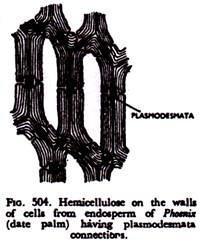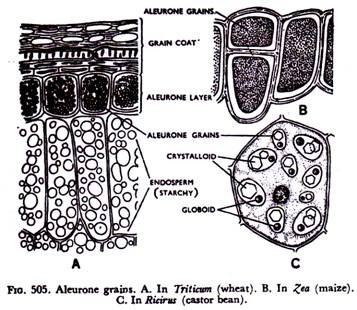ADVERTISEMENTS:
In this article we will discuss about the parts of human respiratory systems.
Nose:
a. Hairs are present in the nasal cavity. These hairs serve to filter the air that is entering the respiratory system. Any particle whose size is more than 6 µ gets filtered in the nose.
ADVERTISEMENTS:
b. The mucous membrane of the nose is highly vascular.
As the air passes through the nose, it gets:
i. Warmed up to the body temperature,
ii. Its water vapor content is also increased. This is essential because if dry air passes through the trachea, it may lead to drying up of the trachea and it can produce a cough reflex.
ADVERTISEMENTS:
Trachea:
a. It is made up of a number of incomplete cartilaginous rings, which prevent the trachea from kinking when the neck is rotated. The posterior 1/6th of the trachea is free from cartilage and is made up of fibrous tissue, which permits certain amount of expansion of trachea during inspiration.
b. The trachea is lined by ciliated columnar epithelium. Underneath this lining, lot of goblet cells are present. These goblet cells secrete certain amount of mucus. The particles which escape filtration at nose get trapped in the mucus present here and swept towards the nose by the movements of the cilia.
These particles are get rid off from the body by the process of coughing. Some of the finest particles may escape from getting filtered here and reach alveoli. They are removed by the macrophages lining of the alveoli or the parenchyma of the lungs.
The trachea divides into right and left bronchi (Fig. 4.3). The branching of the trachea is the most sensitive part of the tracheobronchial tree. The right bronchus is larger than the left and the angle at which it originates from the trachea is also less acute. Because of this reason, any foreign body entering the trachea is found more commonly in the right lung than in the left.
Bronchi:
The bronchi, which are the branches of the trachea, divide further. These branches are called as lobar bronchi that again divide into segmental bronchi. As the branching proceeds, the amount of cartilage present in the walls goes on decreasing. They also acquire a coat of smooth muscle fibers. These smooth muscle fibers are supplied by both sympathetic and parasympathetic nerve fibers.
Sympathetic nerve stimulation or administration of sympathomimetic drugs (adrenaline) brings about relaxation of smooth muscle and hence bronchodilation. This leads to decrease of the airway resistance. This knowledge is useful in the treatment of bronchial asthma. Parasympathetic nerve stimulation brings about bronchoconstriction.
ADVERTISEMENTS:
The bronchi divide to form bronchioles. These bronchioles further divide to form terminal and respiratory bronchioles. The respiratory bronchioles lead to alveolar duct and finally into the alveoli (Fig. 4.4).
Changes that occur as the branching proceeds from trachea to bronchioles:
1. The cross-sectional area goes on increasing. The branching decreases the resistance offered to the flow of airflow (particularly during inspiration).
ADVERTISEMENTS:
2. The amount of cartilaginous tissue also goes on decreasing to be replaced by smooth muscle fibers.
3. The mucous membrane which is lined by columnar ciliated epithelium is changed to flattened non- ciliated at the level of alveoli.
Flattened epithelial cells line the alveoli. Alveolus is approximately 70-300 µ in diameter. The total surface area of all the alveoli together will be approximately 70 m2. At any given time approximately 60-80 ml of blood will be present in the capillaries surrounding the alveoli. Therefore, any given time about 1 ml of blood is spread over 1 m2. This facilitates rapid exchange of gases between air in alveoli and blood in pulmonary capillaries.
Normal respiratory rate is about 12-16/min and is known as rate of respiration (RR). The volume of air that is taken in or expired out of respiratory system during a normal quiet breathing is known as tidal volume and is about 500 ml.
ADVERTISEMENTS:
ADVERTISEMENTS:
Pulmonary ventilation:
It is defined as the volume of air entering or leaving the respiratory system per minute. It is the product of rate of respiration (RR) multiplied by tidal volume (TV), which is about 6 L/min (12 x 500 = 6000 ml/min).
Alveolar ventilation:
ADVERTISEMENTS:
It is defined as the volume of air taking part in the exchange of gases at the level of alveoli per minute. As stated already, the alveolar area region is where the exchange of gas occurs but the air present in the conducting zone does not take part in exchange of gases (dead space air).
It can be calculated by the following formula:
Alveolar ventilation = RR x (TV – DSV)
= 12 x (500 – 150)
= 4200 ml/min
RR—rate of respiration
ADVERTISEMENTS:
TV—tidal volume
DSV—dead space volume
Covering of the Lungs:
The lungs are covered by pleura that are closely adherent to the surface of the lung tissue. This layer of pleura is known as visceral pleura. Another layer of pleura adheres to the inner surface of the wall of the thorax. This layer is known as parietal pleura. A thin film of fluid is present between the two layers of pleura in the potential space known as pleural space.
This fluid keeps the pleural layers adherent to each other. The two layers cannot be separated but can slide over one on the other. In animals, introduction of needle into the pleural space allows us to record the pressure in the intrapleural space.
In the case of human beings, it can be measured from the lower one-third of esophagus by balloon technique. Normally intrapleural pressure is always negative (less than the atmospheric pressure). Sometime the pleural space may get filled with fluid/ air giving rise to pleural effusion and pneumothorax, respectively.


